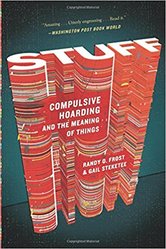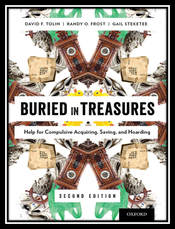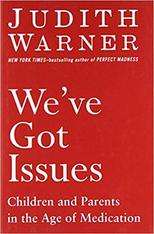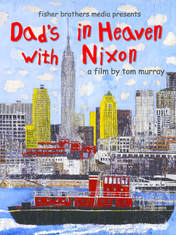|
When is anxiety helpful, and when does it tip into that realm of being so distressing that it’s overwhelming? For many individuals, anxiety is too much and it prevents them from making good choices. All they want is for the anxiety to go away.
But the reality is that some anxiety can be a good thing. Anxiety alerts us that something is wrong, that something needs to change. Anxiety catches our attention. The key is knowing how much anxiety is the right amount. Anxiety needs to be managed so we’re focusing on what we need to do, but that it’s not shutting us down completely. I think of anxiety management as a two pronged approach. Sometimes, it’s important to deal with the emotion, bringing anxiety down so that more rational thinking and behavior is possible. In other cases, the goal is to be practical. Listen to what the anxiety is saying and take steps to remedy the situation. Frequently, the first step in managing anxiety is simply being aware of it. Once you're is aware of anxiety, simple steps can be taken in an attempt to bring it under control. For many people this involves deep breathing, progressive muscle relaxation, and general awareness of the body. Once the anxiety is at a reasonable level, it makes sense to move into a practical realm. Look at the situation causing anxiety, consider if you're avoiding actions that could improve the situation, and see if simple practical means would be helpful. For example, if you are worried about your tires, it makes much more sense to have them checked or replaced then to do anxiety reduction techniques. For some people, there can be a lot of anxiety and avoidance around taking these practical steps. That's the time to do an initial anxiety reduction technique, then it's appropriate to move into the problem-solving mode. The real key to anxiety management is to continually be thinking about what you really need. Do you need to manage your emotions, or do you need to take steps to fix your problems? In an earlier post, I talked about a practical and simple technique for dealing with anxiety. In this post I'd like to expand on some of those ideas.
For many individuals on the autism spectrum, anxiety is a constant presence. I find it can be very helpful to view these worries in a more mathematical way. Although many people on the spectrum are very good at math, there's a common belief that math and emotions are two different things. As both an engineer and a therapist, I like to explore the intersection of math and emotion. You don't need to have an advanced understanding of probability theory to use this technique. Simply think about the general odds that something you worried about will actually happen. Usually, worries are quite specific, and are based on the idea that many specific events will have to occur. To think about probability, it's a simple matter to consider how likely each event is. You don't need a great deal of accuracy, but I find it's helpful to have a number, like 1 in 100, rather than a word such as "unlikely" or "rarely". Here's an example. Suppose you're worried about a traffic accident making you late to the airport, so that you miss a flight. If this is a valid worry, then it makes sense to take steps to leave earlier. But, so often, the actual worry is unlikely to happen. That's when looking at probability makes sense. How often is there an accident that causes a delay on the roads? Once per day? How likely is it that the delay will be when you're actually on the road? Once per 2 months? How likely is it that the delay will be more than a few minutes? Although I travel busy Bay Area highways, it's rare that the accidents cause delays of more than a few minutes. Maybe the chances are 1 day in 365 that the delay will be so long I would miss the flight. Does that warrent a great deal of worry? If your worries continue, it can be helpful to do the following tedious yet enlightening exercise. Make a rough estimate of the actual odds of your worry. Create a jar or bowl filled with white pieces of paper, representing everything working out OK, and just enough dark pieces of paper to represent your worry. The chances of one in 1000 could be represented by one piece of blue paper in a sea of 999 pieces of white paper. Although it takes a bit of time, it's not that difficult to cut many scraps of paper by stacking sheets. It's also helpful to see just how long it takes to cut 999 pieces of paper as compared to the one piece of blue paper. I find that the actual exercise of pulling papers from the jar repeatedly helps to illustrate in an experiential way exactly how unlikely many worries are. Then you get to take the same steps I suggested in the earlier post. Manage the emotion of anxiety, and take the practical steps to deal with the issues as well. So many of the ASD or ADHD clients who come to see me are spending hours a day online or playing video games. And, they are often dealing with depression and social isolation as well. Of course, as an engineer, I well understand that correlation does not indicate causation But, as a therapist, I recognize that many of my clients have interest in social connections, and they want to have interesting lives, but the effort to do these things is pretty stressful. Video games provide an anxiety management tool, as well as an experience that is both immediately gratifying and at the same time low stress.
Along these lines of thought, The New York Times published an article titled Video Games and the Depressed Teenager. For now, excessive internet and video use is not technically an addiction, although it is a topic of further study in the new DSM 5, which is going to be published this spring. I think it’s important for parents and young adults to consider these results in deciding their standards for online activities in their own homes. Many parents think addition is an appropriate term, because they can see how their own kids and teens behave when they are deprived of their gaming time. For many, less screen time seems to result in calmer and happier moods.  I recently published a review of Buried in Treasures, Help for Compulsive Acquiring, Saving, and Hoarding, by David Tolin, Randy O. Frost and Gail Steketee, a hands-on workbook for those struggling with hoarding and disorganization. What led me to that book was a book I’d read a few weeks earlier, Stuff, Compulsive Hoarding and the Meaning of Things, by Randy O. Frost and Gail Steketee, two of the same authors. As a psychotherapist, I’m fascinated by all different types of minds, and differing ways of looking at the world. Hoarding, with its emphasis on and connection to the world of objects rather than other people, is one such difference. Where Buried in Treasures is a problem-solving Cognitive Behavioral workbook, Stuff reads more like a novel. Its pages are peopled with the author’s examples of different type of hoarders, those who collect antiques, or animals, or even garbage. The authors present some data and facts, as well as theories and their own ideas about what drives hoarders. There is a chapter toward the end on getting help. But the true allure of this fascinating book is the chance to get to know the characters its written about. Although the authors present their own theories on what drives these individuals, you’ll see them in such detail you can come up with your own ideas and even see the ways we all have our own attachments to objects and our own hoarding-like behaviors. Hoarding may be an extreme behavior, but after reading this book, you'll think twice about the next grocery bag you save or the stack of mail on the front table.  Hoarding is not a disorder that exists only among those on the autism spectrum, but certainly there can be a strong aspect of clutter and disorganization that goes along with Asperger’s, autism, ADHD and the accompanying deficits in executive function. Hoarding at its most severe really requires the help of a specifically trained mental health professional, because it’s about so much more than getting organized and cleaning things up. But for those who won’t, or can’t, access professional help, Buried in Treasures, Help for Compulsive Acquiring, Saving, and Hoarding, by David Tolin, Randy O. Frost and Gail Steketee can be the next best thing. This book, written by a team of experts on Anxiety Disorders, OCD (Obsessive Compulsive Disorder) and hoarding, functions as a step by step guide to solving the problem. Heavily influenced by CBT (Cognitive Behavioral Therapy) techniques as well as practical advice, the book leads the reader through exactly what to do to solve the problems. The focus of the program isn’t just on organizing and throwing things out, it really delves into managing the underlying dysfunctional thinking and erroneous beliefs that can make a hoarding problem so difficult to get a handle on. The authors present numerous specific suggestions for testing beliefs and developing new ways of thinking about objects. In addition to the step by step instructions, Buried in Treasures includes questionnaires, quizzes and worksheets, so the reader can figure out exactly what specific issues are most difficult for him or her to deal with. There are also separate sections with information to assist family members, organizers, and coaches in working with hoarders. This book is a practical hands-on guide that will be useful throughout any stage of the process of dealing with acquiring, clutter, disorganization, and hoarding.  Are kids today over-medicated and over-diagnosed by their hovering helicopter parents? Or, is all the medication and treatment necessary to help kids manage their very real mental disorders? Those are the questions Judith Warner addresses in We’ve Got Issues: Children and Parents in the Age of Medication. As Warner explains, she started writing this book based on the premise that today’s kids are over-medicated and over-diagnosed, but as she continued her research, she decided that the media and it’s anecdotal evidence were oversimplifying the picture. As an engineer, I love that Warner actually researched the topic, and allowed the evidence to influence her thinking. I also appreciated that she has such an extensive reference list, over 50 pages for those who want to learn more. As a reader, I appreciated the well written style of the book. But, as a therapist, I thought the conclusions were too simply stated, and the conversational, anecdotal tone was relied on so much it interfered with a more rigorous analysis. Surely, the truth lies somewhere in the middle. Some parents hover, expect too much from their kids, and pathologize normal behavior. Other parents, certainly the overwhelming majority of the families I’ve seen, are dealing with kids who are clearly struggling, kids who have evident difficulties, and their parents allow medication and diagnosis only with caution and reluctance. But the way to illustrate this truth is through facts and data, and too often Warner relies on examples and stories from the families she’s interviewed. A compelling read, no doubt, but ironic in that Warner is criticizing the very type of research-by-anecdotal-evidence that she’s using here. Warner also criticizes the mental health treatment in our country, and I don’t think anyone would argue with her. But she illustrates her thesis with a series of examples from many of the families she’s met, who told of shoddy treatment and erroneous diagnosis. Warner complains because there’s no clear path for parents to take, and they end up “wandering in the dark forest, without a compass, as they tried to figure out how to help their son.” Again, although I agree with Warner’s concerns, it’s a sad truth that mental illness and its treatment is so complex that there’s often more art than science involved. The best treatment may involve uncertain diagnoses, trial therapies, and a great deal of uncertainty. There may not be a clear path. Still, I’m including this book on my blog list because, in spite of its shortcomings, it is a worthwhile and interesting read. With its extensive reference list there’s plenty of material so you can take your own understanding to a much deeper level. Dad’s in Heaven With Nixon is a touching film about a close, multigenerational family and their struggles with mental illness, alcoholism, and autism. In spite of all these difficulties, the family’s bond shines through the film. The real beauty of this documentary is the loving relationships it shows between Christopher, a gifted and successful artist with autism, his aging mother, and his brother and the film’s creator, Tom Murray. Christopher, born in 1960, suffered oxygen deprivation at birth and was later diagnosed with autism. Certainly, the 1960s and 1970s were not a time of great information about helping those with autism, and Christopher underwent a number of therapies. His mother talks about how she was uncertain of how these therapies were working, but that she did determine that loving her son would help him, and how she and all the siblings worked together to encourage his development. In seeing the now adult Christopher it’s apparent how successful she was in her efforts. Christopher Murray is a charming and capable adult, living on his own and successfully holding two jobs as well as succeeding as an artist. He seems to have continued with his loving relationship with both his mother and his older brother.  The alternate story woven through the film is of the Murray’s father and grandfather. Through old films and family pictures, Tom Murray narrates the story of the men’s difficult lives, including chronic drinking, mood swings, financial difficulties and probable depression and bipolar disorder. It’s an intriguing juxtaposition with the story of autism in comparison. So often, parents despair of an autism diagnosis, and it’s refreshing to see a representation of a happy and successful adult on the spectrum, and how he contributes so positively to his family. The film is presented regularly on Showtime. You can get more info, and view Chris Murray’s artwork on the film’s website. So many individuals with Asperger’s and autism get caught up in worries, repetitive thoughts, ruminations. Often, worry is the number one difficulty that individuals on the autistic spectrum have to deal with. We all face failure, rejection, unpleasant situations and uncomfortable emotions. But the difference in how well you manage is about how well you can let go and move past those difficulties.
Worry is about the past, looking at all the things that have gone wrong for you. And, worry is about the future, recreating all those negative situations and imagining them into the your future. That’s why present based programs, things like Eckhart Tolle’s the Power of Now, or Mindfulness Based Stress Reduction can be so effective: they help you move out of the past, out of the future, and focus on the now. Even a simple step like pausing for a breath or two can reset your anxiety level, move you out of thinking about the past or imagining the future, and take you right into the present moment. “It’s not you, it’s me.” A cliched breakup line? Yes, it is. A true statement? Yes, again.
So often, when I’m talking to people, they’re stressed about someone else’s reaction to something that happened. They told a story, and the listener wasn’t paying attention. They tried to invite someone for lunch and the invitation wasn’t accepted. Or, a close friend has drifted away, for no clear reason. Then they start analyzing, worrying, ruminating. “What did I do wrong?” “Why does this always happen?” What should I do differently next time?” For individuals with any degree of anxiety about social interactions, these “rejections” can feel so devastating, so personal. Of course it’s important to examine the situation, see if you did play some role in things not working out too well. But then, it’s okay to let it go and stop dwelling on it. We all lead busy lives, with so many obligations, pulled in so many different directions. Most of the time, you didn’t do anything wrong. You colleague really does have something else to do at lunchtime. Or, your story was fine, the listener was just caught up in remembering an important obligation. Often, the true social damage happens after this minor disconnect. An insecure individual can read too much into it, start over-thinking, get too worried, pull back too much, turn a little issue into a big pattern of social issues. On the other hand, socially confident people assume the best, about their ability to be a good friend, and their interactions with others. If a friend says he’s busy, they assume he is, and issue the invitation again. If an invitation is rejected, they try again. After all, chances are, it’s about them, not you. Stress and anxiety can be major problems for individuals on the autism spectrum. For all of us, modern life can be overwhelming, pressured, fast paced and demanding. For those on the spectrum, the stresses can be even greater, because they may include social anxiety, sensory problems, career difficulties, or managing repetitive thoughts. One very effective way of dealing with stress is through mindfulness. Mindfulness, as the term is used in modern American society, is based on Buddhist ideas, although it is not a religious concept. Jon Kabat-Zinn, in his classic book Wherever You Go There You Are (1994) defines mindfulness as “paying attention in a particular way: on purpose, in the present moment, and nonjudgmentally.” (p. 4) and states that it is “simply … the art of conscious living.” Kabat-Zinn is a Professor of Medicine Emeritus and the founding director of the Stress Reduction Clinic and the Center for Mindfulness in Medicine, Health Care, and Society at the University of Massachusetts Medical School. Mindfulness Based Stress Reduction is a program the center developed to integrate mindfulness and mindfulness meditation into modern medicine and healthcare. Mindfulness techniques have been shown to be effective not just for medical conditions, but for managing stress and anxiety as well. You can learn more about mindfulness in Kabot-Zinn’s Wherever You Go There You Are, or his Full Catastrophe Living: Using the Wisdom of Your Body and Mind to Face Stress, Pain and Illness (1990). There are also websites and online videos on mindfulness based stress reduction, as well as eight week courses available in locations throughout the country.
|
Patricia Robinson MFT
I'm a licensed therapist in Danville, California and a coach for Asperger's and ADHD nationwide. I work with individuals of all ages who have special needs, like Autism Spectrum Disorders, ADD, ADHD, and the family members and partners of special needs individuals. Archives
February 2015
Categories
All
|



 RSS Feed
RSS Feed